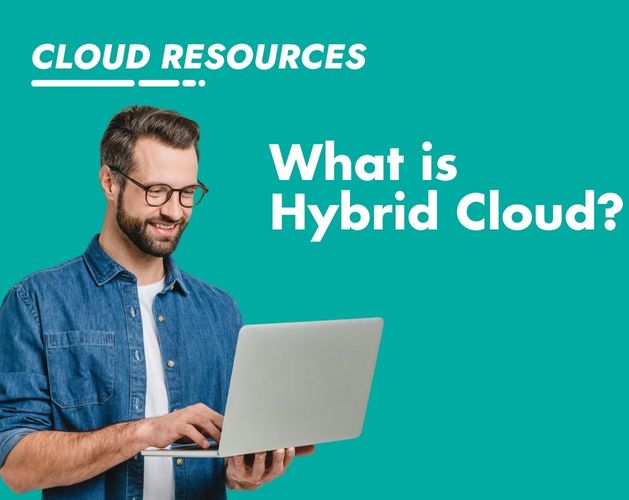Hybrid cloud refers to the combination of a public cloud service with on-site and/or private cloud and/or datacentre infrastructure.
The result can be in many shapes, for example;
- Two (or more) separate IT platforms, not integrated in any way and providing IT for different parts of a business. This is quite common but will incur many issues around operational complexity and governance.
- A fully integrated (connected, governed etc.) IT platform providing IT for the same or different parts of a business. Public cloud could be DR for on-premises (very common), or provide burst infrastructure for peak periods (not so common), or each platform is used for specific workloads, for example, public cloud for dynamic/seasonal digital workloads, while on-premises is used for workloads that cannot or should not move to the cloud.
There are nuances to these examples. For instance, many technology partners, such as Microsoft and HPE, provide on-demand dedicated infrastructure platforms that can be hosted in your datacentre and bridge the public cloud and on-premises worlds.
Simply put, hybrid cloud lets businesses scale their workloads beyond the capabilities of their established on-site hardware while still leveraging it if it’s not ready to be retired or can never be for certain workloads, aka the best of both worlds.
What is a Hybrid Cloud used for?
The number of companies pursuing a hybrid IT strategy is skyrocketing. A staggering 96% of global businesses have embedded a hybrid cloud solution within their day-to-day operations.
The model’s growing use amongst large corporations and SMEs is largely down to its broad array of practical applications, including:
- Development and testing – When a business needs to develop and test new service offerings and updates in preparation for software rollouts, they usually do so in the public cloud. It's cheaper to do so in the public cloud as they turn it off when not needed and quickly change it through on-demand infrastructure.
- Disaster recovery – With a hybrid cloud system, data can be backed up from on-premises into the public cloud. This avoids expensive permanently running DR systems or delays from cold-starting DR when needed by instead only paying for it in public cloud when needed.
- Modernisation of digital infrastructure – public cloud is the natural playground for modern digital products and services, providing turn-key solutions and access to cutting-edge technology to help businesses monetise data or develop dynamic workloads decoupled from traditional hardware. Conversely, on-premises / dedicated infrastructures are often highly cost-effective.
- Boosting efficiency – Burdening an IT infrastructure leads to one thing – delays. And increased lag time and crashes often lead to decreased customer satisfaction and reputational damage because the system can't handle the demand. By spreading the operational workload across a public cloud capable of almost infinite expansion, businesses guarantee fast service speeds and greater all-round efficiency.
Hybrid Cloud Considerations
When establishing a hybrid cloud, consider these points.
- Prioritising needs – Understanding which cloud options best facilitate long-term growth is critical when choosing the right package. Don’t invest in an expensive on-prem refresh or complex migration to public cloud if your ultimate goal is moving to SaaS in 12 months.
- Look at your workloads – Planning your workloads is critical for getting the most out of your hybrid cloud solution. Businesses need to examine what they need, what they already have, and identify gaps. And we don’t just mean in terms of infrastructure and applications but more so the systems used to provision and maintain IT to ensure you don’t duplicate everything across each Cloud.
- Research your options – The major public cloud providers, AWS, Microsoft Azure, and Google, offer a range of options that are both similar and distinct. Usually, a similar service (compute, storage) in a similar region won’t be too different from a pricing perspective. But similarly, they each specialize in different areas (e.g. data analytics, containers, approach for start-ups), which you should be aware of when selecting a platform.
With so many things to consider, it's crucial to avoid letting cost be the be-all or end-all when shopping for cloud services. - Double-check compliance – Security compliance is vital. One wrong move can land you in legal hot water, so it's essential to check that cloud services meet your basic security needs. Businesses should ask about GDPR, SOC, PCI and HIPAA regulations when examining cloud services and factor this into their decision.
- Diligent planning – a migration to cloud, which may be new to you, requires the same planning that you will have previously experienced between datacentres or infrastructure refreshes. Approach it with that mindset, and you will have the recipe for success.
For more information on hybrid cloud solutions – or assistance in streamlining and strengthening your business' critical IT infrastructure – contact the team at Softcat today to find out how we can help you.




